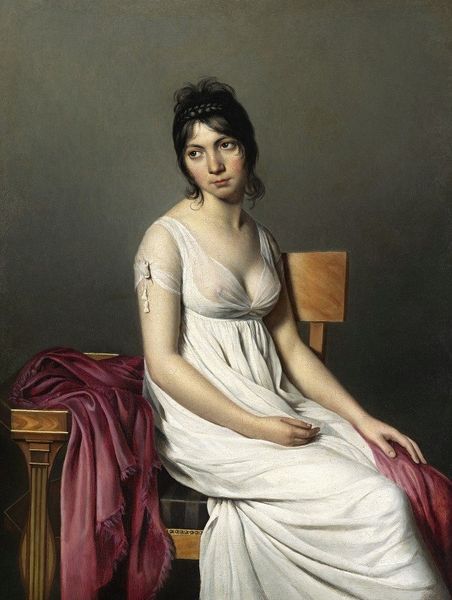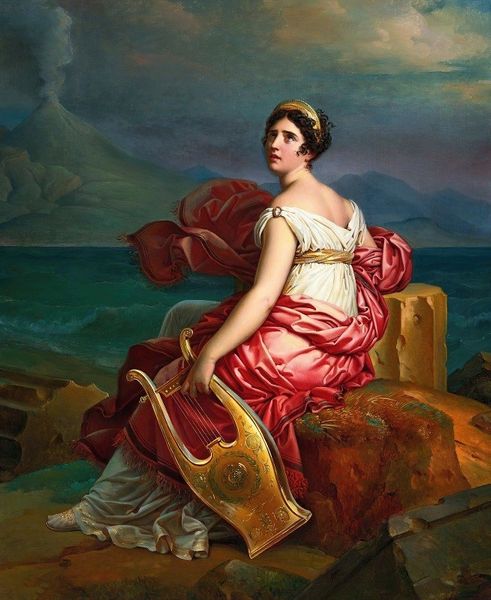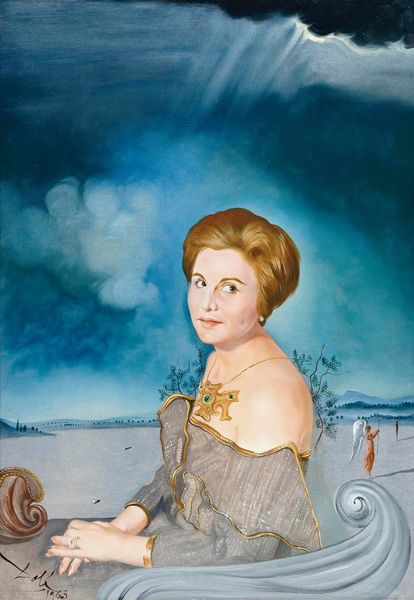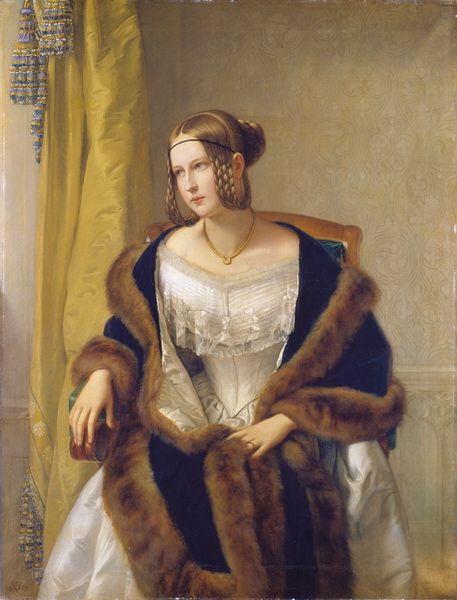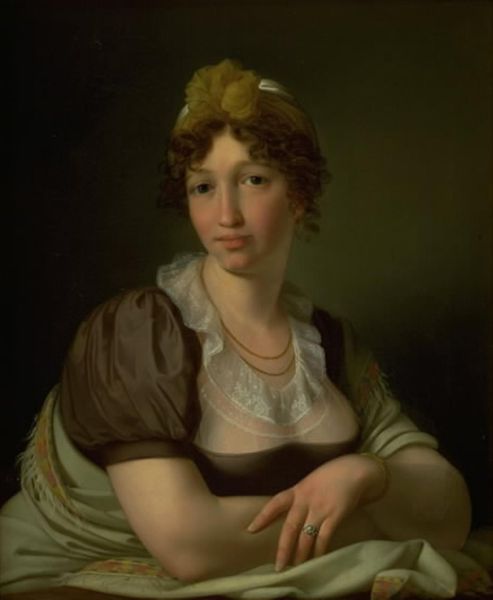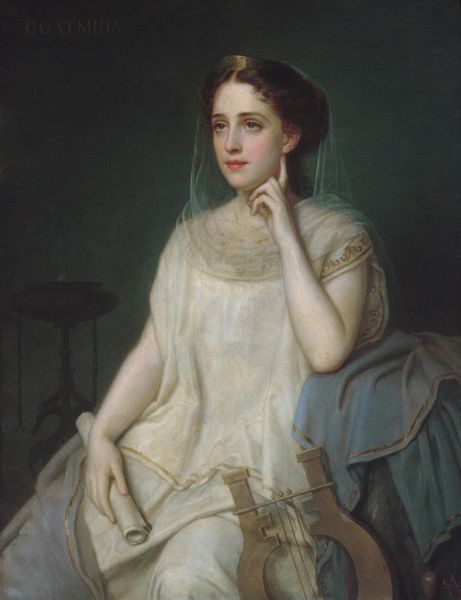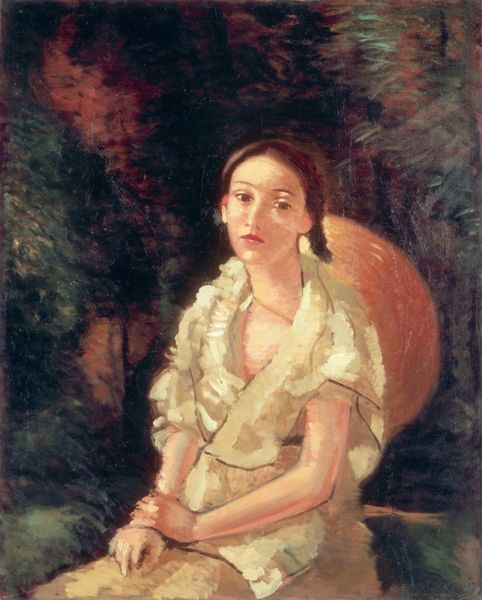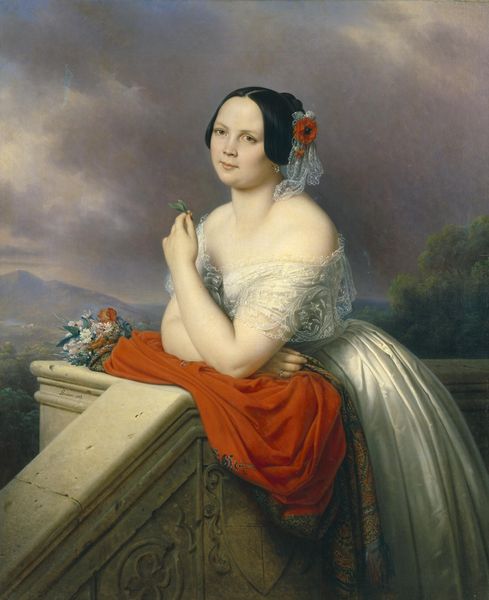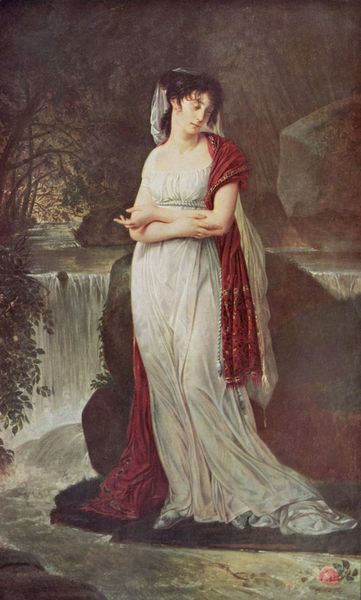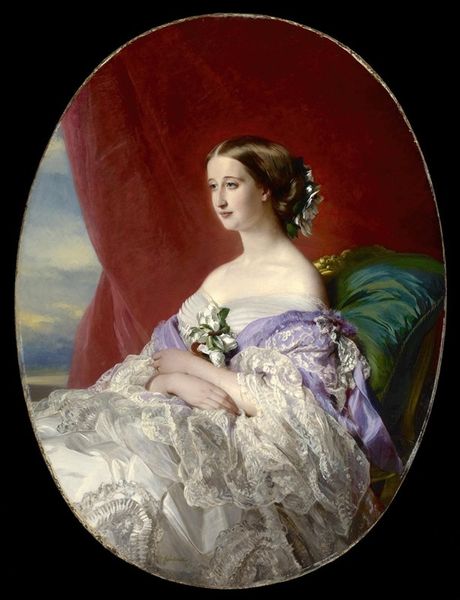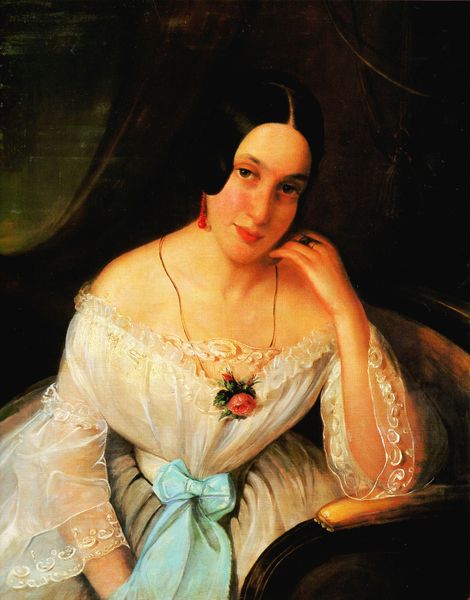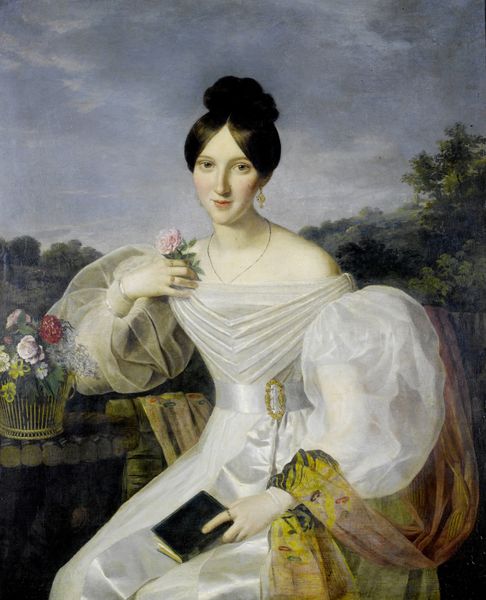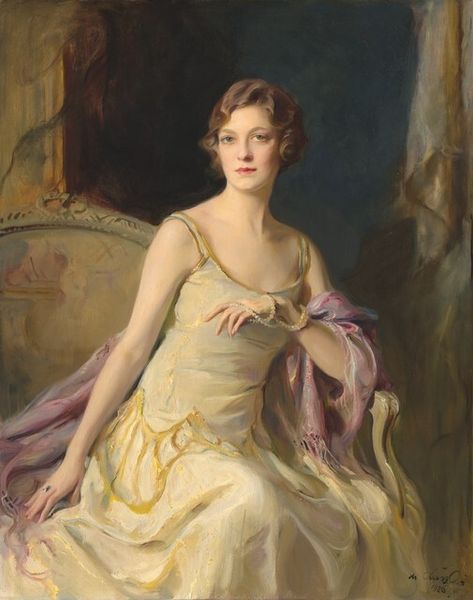
painting, oil-paint
#
portrait
#
painting
#
oil-paint
#
romanticism
#
genre-painting
#
academic-art
#
modernism
Copyright: Public domain
Curator: Let's consider this painting titled “A Friend of Torres Arias” by Julio Romero de Torres. It’s a compelling work to consider when tracing the trajectory of early modernism in Spain. What are your initial thoughts on this portrait? Editor: There’s a real languid stillness to this composition; it’s immediately striking. The cool palette, dominated by greens and muted greys, contributes to this somewhat melancholy mood. Curator: Romero de Torres moved away from overt costumbrismo—the depiction of everyday life and customs. Yet, even here, the model, while modern, is draped with traditional Spanish elements: the lace mantilla, the string of pearls. He walks a tightrope. He modernized tradition. Editor: Yes, there’s an interesting tension created by this fusion. The green dress, so fashionable for its time, clings and defines. Then the black lace softens the modern silhouette, adding a veil of theatrical drama, softening the geometry. Curator: It's believed that Romero de Torres' success lay in how he navigated between tradition and modern sensibility. He secured state commissions but became increasingly critical of the government, and those tensions, I think, feed into his works. Editor: It’s true. Consider also how the model’s gaze draws you in. There is a strong symmetry within the portrait itself, reinforced through her dress, her necklace, even her composure and pose—creating a static field that contributes further to that atmosphere of calm. Curator: The artist held a prominent position, deeply ingrained within Spain’s art scene but it is also a cultural and political context undergoing enormous change at the time this work was made. It's the art of transition. Editor: Ultimately, “A Friend of Torres Arias” provides a fascinating display of contrasting elements working in unison: traditional elements with the artist’s distinct style, contributing a certain balance and serene character that defines the work. Curator: A moment caught, I suppose. Something for us to pause and contemplate about a place and time so very different from our own, but somehow mirrored still.
Comments
No comments
Be the first to comment and join the conversation on the ultimate creative platform.
